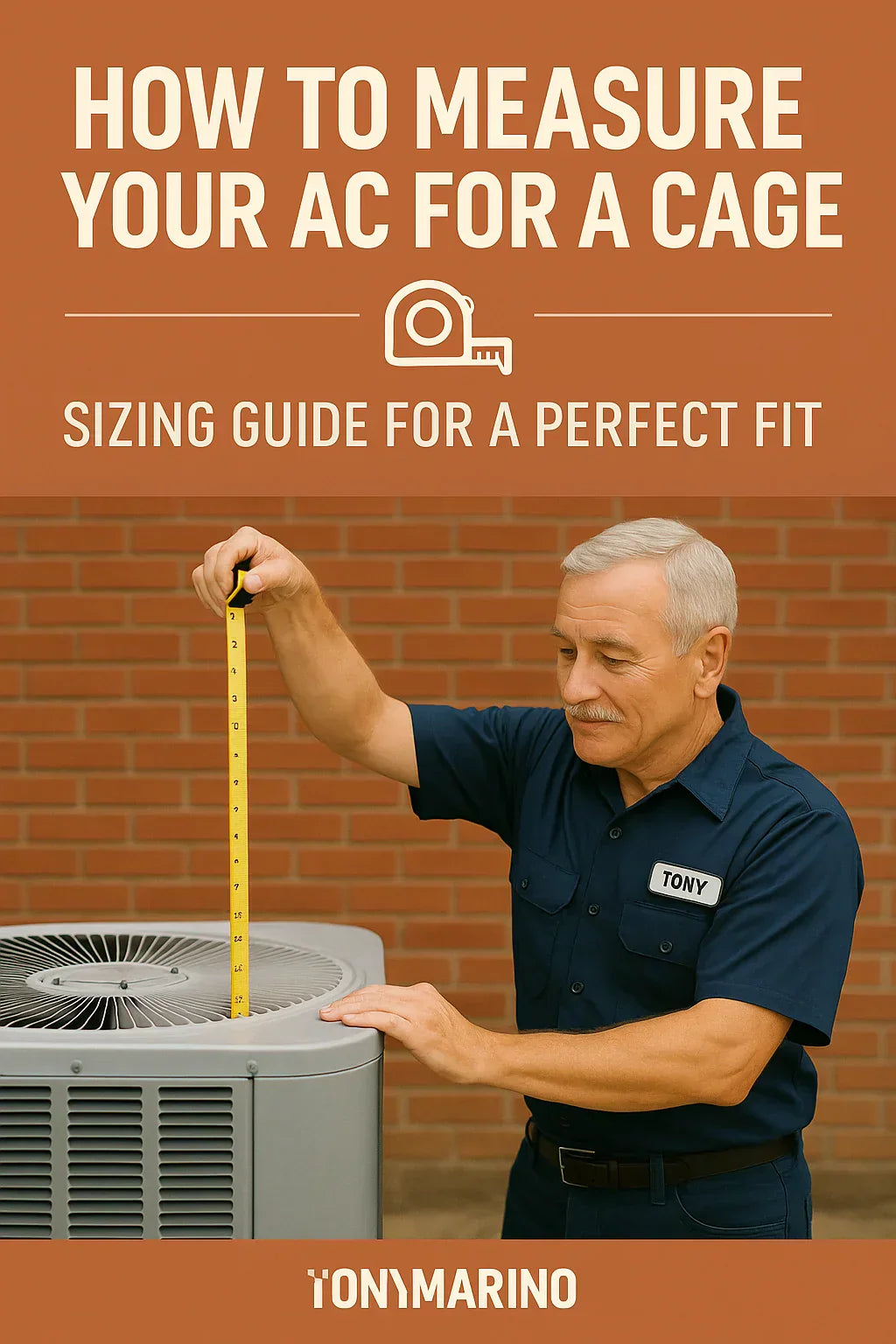Choosing the right air conditioner cage is about more than just picking the strongest model. If your cage doesn’t fit properly, you could risk restricting airflow, voiding warranties, or complicating maintenance. In this guide, Tony Marino walks you through everything you need to know to size your AC cage correctly, with special focus on fitting the T-Rex TREX4x4 model.
🔢 Why Sizing Your AC Cage Correctly Matters
An incorrectly sized cage can:
-
Block airflow and reduce system efficiency.
-
Make service access difficult for technicians.
-
Put extra strain on the condenser motor.
-
Violate manufacturer and local code requirements.
-
Lead to unnecessary wear and early system failure.
The goal is full protection without interfering with system performance.
🔍 Step 1: Gather the Right Tools
-
Tape measure (rigid steel preferred for accuracy)
-
Notepad or digital measurement app
-
Camera (optional, for reference photos)
-
AC model and serial number (for manufacturer specs)
Tony’s Tip: Always measure twice before ordering your cage.
🧹 Step 2: Measure Width and Depth
-
Measure the full width of the condenser, including any external pipes or covers.
-
Repeat for depth.
-
Record measurements to the nearest ¼ inch.
Example:
If your condenser is 34" wide and 30" deep, record as 34”W x 30”D.
Allowance Rule: Add 2 to 4 inches on all sides for airflow clearance and technician access.
🔣 Step 3: Measure Height
-
Start from the ground pad to the highest point (including fan guard or raised grilles).
-
Allow for 6 to 8 inches of overhead clearance inside the cage for unimpeded airflow.
Example:
If your condenser is 36" tall, select a cage at least 42" internal height.
🔒 Step 4: Check Service Clearances
Consult your manufacturer’s service manual for required access clearances:
-
Common minimums: 12" to 24" clearance on all sides.
-
Verify rear access for electrical panel, refrigerant lines, or service ports.
-
T-Rex TREX4x4 allows easy front and side panel access without removing the cage.
🌡️ Step 5: Account for Local Code Requirements
Local building codes or HOA rules may require:
-
Specific setback distances from property lines.
-
Minimum clearance to fences, walls, or decks.
-
Appearance standards for external structures.
Tony’s Reminder: Always check local codes before finalizing your order.
🔹 T-Rex TREX4x4 Sizing Specifications
The TREX4x4 model is designed for flexibility:
-
Fits most residential AC units up to 48" W x 48" D x 48" H.
-
Adjustable panels allow customized fit.
-
Bolt-down base accommodates slightly uneven ground pads.
-
Powder-coated steel finish meets most HOA appearance guidelines.
🎡 Common Measurement Mistakes to Avoid
-
Measuring only the metal cabinet, not external piping.
-
Forgetting overhead clearance for fan airflow.
-
Failing to consider slope or uneven ground.
-
Ignoring service access needs.
Tony’s Rule: "If your tech can’t easily get to the electrical panel or refrigerant lines, your cage fit is wrong."
🌊 Weather Factors to Consider
-
Wind load: Heavier cages resist shifting better.
-
Flood risk: Ensure bottom clearance doesn’t trap water.
-
Snow loads: Leave enough top clearance for proper drainage.
The TREX4x4’s sturdy design addresses all these common weather challenges.
🥇 Verified External Sources:
NBC News: Copper theft cases rise
FEMA Hurricane HVAC Equipment Protection
State Farm Insurance Discounts for Theft Prevention
In the next topic we will know more about: AC Cage Installation Guide: Can You DIY or Should You Hire a Pro?







